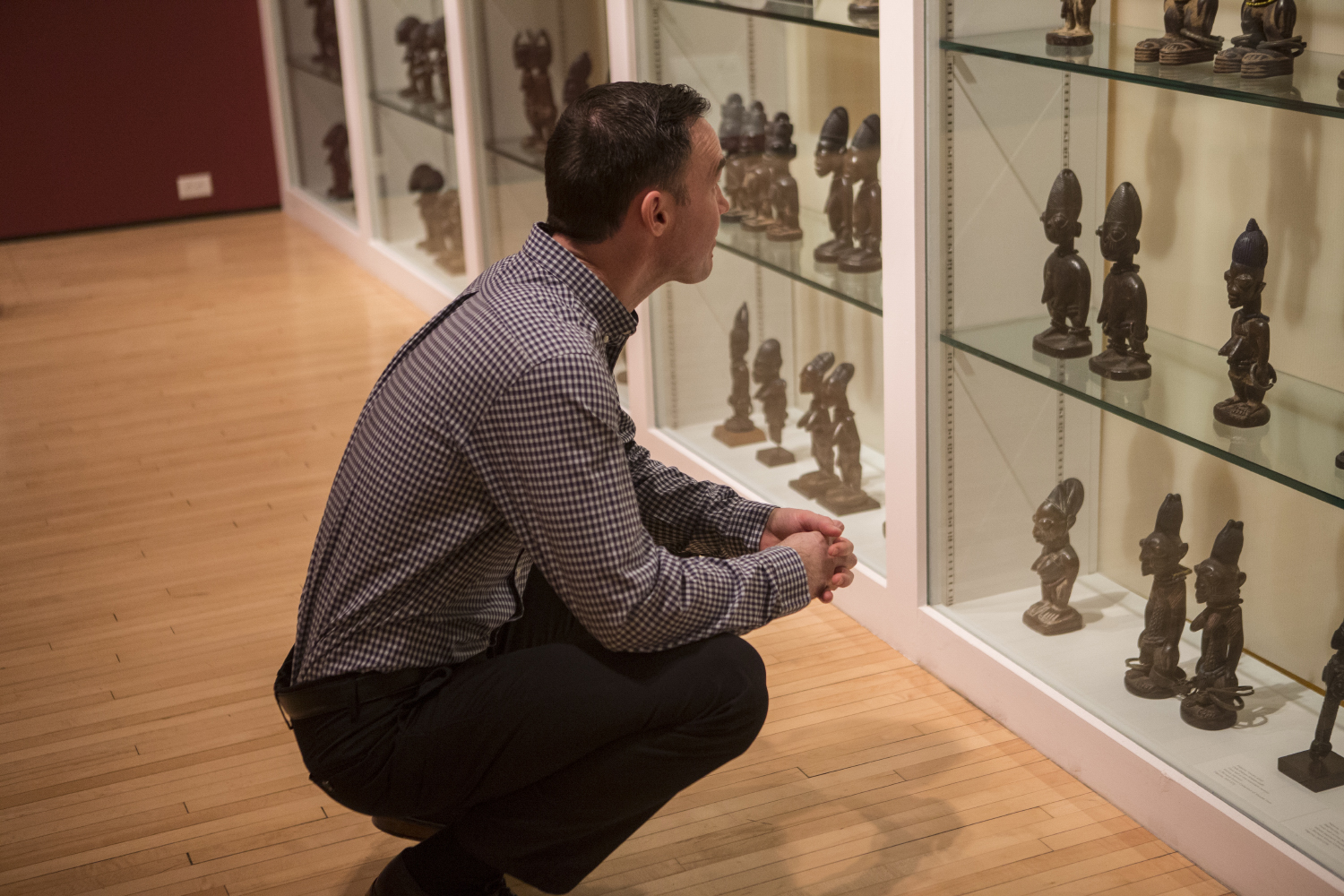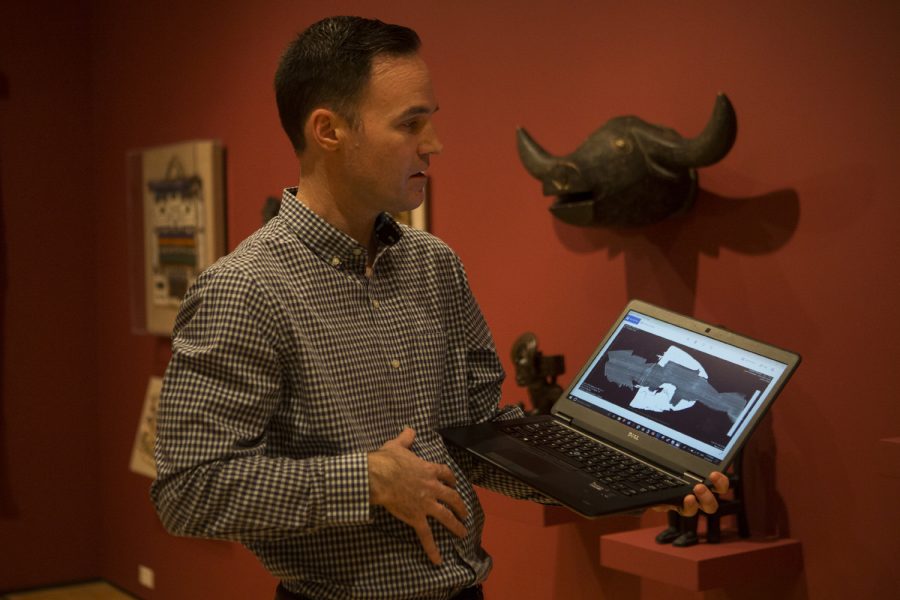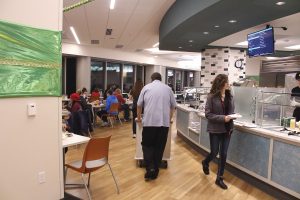Stanley Museum of Art, UIHC use CT scans on African art
The Stanley Museum of Art has teamed up with the UIHC to examine African art pieces more closely using CT scanning technology.
Cory Gundlach talks about his findings within works of African Art at the Stanley Museum of Art in the Iowa Memorial Union on February 19 2019. Using a CT scanner at University of Iowa Hospitals and Clinics, Gundlach scanned some of the works to see what might be hidden inside. (Grace Colton /The Daily Iowan)
February 19, 2019
The creation of a Central African power object begins with a client who needs a solution to a problem. An artist is commissioned to sculpt the figure, leaving space for an internal cavity. There is where the diviner, or communicator with the spirit world, places supernatural substances.
It was hidden objects such as these that the Stanley Museum of Art and University of Iowa Hospitals & Clinics recently teamed up to find — and ultimately discover — when they observed 16 of the museum’s African art pieces under a computed tomography scanner.
“This is just the beginning,” Stanley Museum Africa, Oceania, and the Americas Curator Cory Gundlach said. “I can talk to people who have done research in the areas of Africa associated with these objects and get a better understanding of how they may have worked in their original standing.”
He said he was originally prepared to find little to nothing in this project, because often when a power object leaves Africa, the diviner will empty its contents in order to neutralize its power as it enters the art market.
For example, he said CT scans revealed the inner cavity in a Songye nkisi to be void of divination ingredients, even though the latter would have been necessary for the power object to be considered effective in its original community.
“There are others that still contain medicinal substances placed inside the object,” Gundlach said. “One of the most delightful surprises was related to a figure that, within a couple inches of encrusted material around the torso, there are cowry shells lined up in a cardinal direction configuration.”
RELATED: UI Museum of Art celebrates 50th anniversary
This suggests the object could have a connection to the cosmogram, which, Gundlach said, is a widespread symbol of the belief in many African regions that life and death are cyclical. In other words, the human spirit travels through the realm of the ancestors and back up into the realm of the living.
Gundlach said the Stanley Museum and UIHC also studied bundles of divination instruments that were not necessarily concealed in a power object, such as antelope horns wrapped in animal hide, which were presumably empowered by a diviner.
“A power object is not just about how it looks but also about invisible power,” Gundlach said. “That’s what makes these objects so incredibly interesting and beautiful.”
In addition to the power objects being wonderful pieces of art to work with, Gundlach said, the project would have been different without the team effort of him and curatorial research assistant Rachel Cobler and the UIHC radiology team.
Stanley Museum Director Lauren Lessing said the collaboration between the museum and UIHC supports the UI’s broader strategic plan of multidisciplinary partnerships across campus, especially in the field of research.
“I think this is the beginning of a beautiful friendship,” Lessing said. “The radiologists and the staff we worked with at the hospital are really excited about this project. We have 15,000-plus objects in our collection, and there’s so much research to be done on all of them.”
But first, Lessing said, there’s more to discover with the African art in question. UIHC is still providing higher resolutions of some scans so that museum staff can see the materials the objects contain more clearly or from a new perspective.
“I knew it was going to turn up really interesting stuff,” Lessing said. “I also knew it was going to be very engaging.”

Art Curator Cory Gundlach is seen in the Stanley Museum in the IMU on Feb. 19. Some of the works of African art he studies by using a CT scanner to see what is hidden inside. (Grace Colton /The Daily Iowan)
Lessing said she would love to see students involved in this kind of cross-disciplinary research in the future, and she believes that working with the museum’s collection might be a great way for them to learn about some of the imaging instruments involved.
CT research associate Melissa Saylor said the project heralded an interesting opportunity to figure out the best protocol for searching for hidden, unknown objects in artifacts. Not only did UIHC come up with good images, she said, researchers were also able to create 3D images.
“I think it’s very interesting to most people, because they wouldn’t expect the museum to come to the hospital for images of their artifacts,” Saylor said. “It’s eye-opening to help out the community with different projects.”






